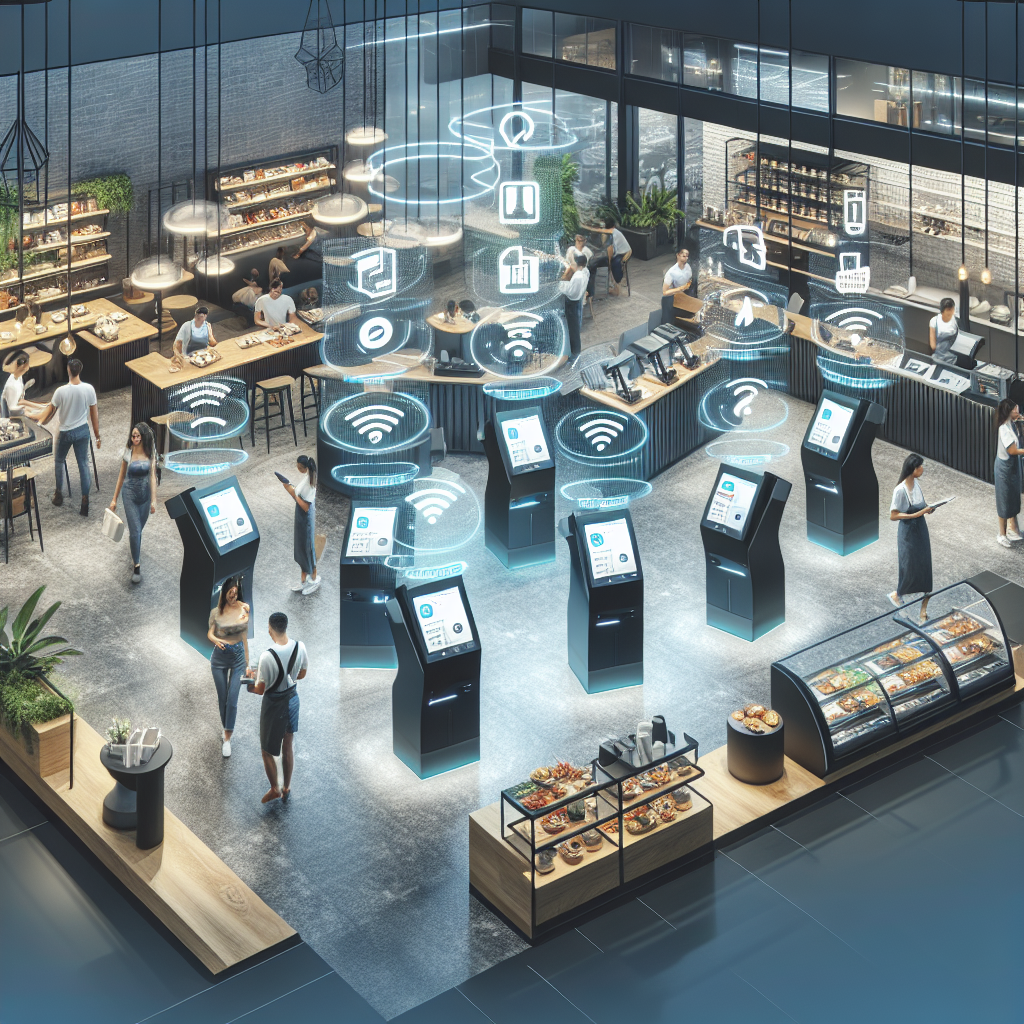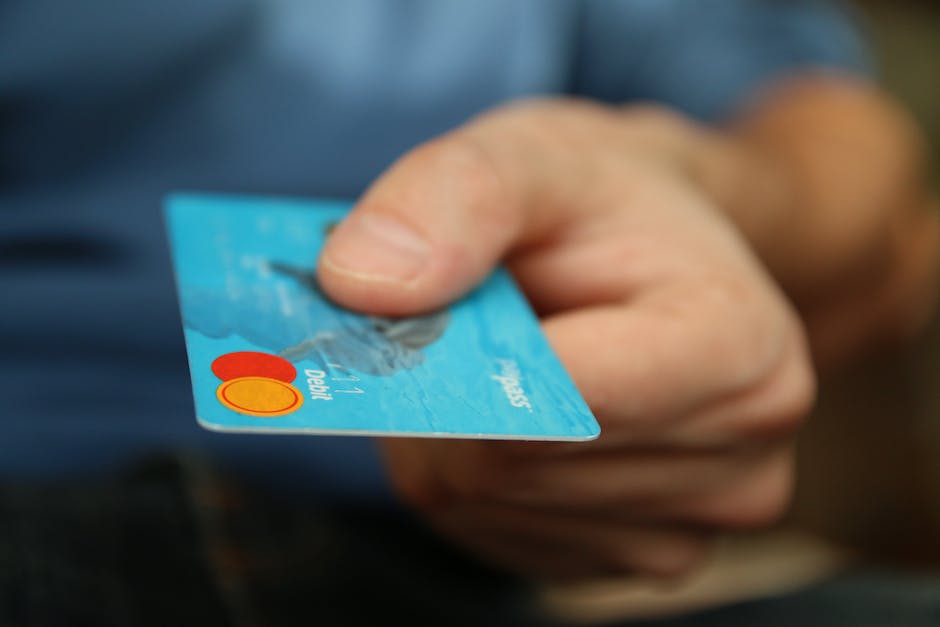-
Table of Contents
Mobile Payment Solutions for Restaurants
Mobile Payment Solutions for Restaurants
In today’s fast-paced world, technology plays a crucial role in every industry, including the restaurant business. With the rise of smartphones and mobile apps, mobile payment solutions have become increasingly popular among consumers. These solutions offer convenience, speed, and security, making them a must-have for any restaurant looking to streamline its payment process.
One of the top mobile payment solutions for restaurants is mobile wallets. Mobile wallets, such as Apple Pay and Google Pay, allow customers to store their credit card information securely on their smartphones. When it comes time to pay, customers can simply tap their phones on a compatible payment terminal to complete the transaction. This eliminates the need for physical credit cards or cash, making the payment process faster and more efficient.
Another popular mobile payment solution is mobile ordering and payment apps. These apps allow customers to browse the menu, place their orders, and pay for their meals directly from their smartphones. This not only saves time for both customers and restaurant staff but also reduces the risk of errors in taking orders. Additionally, these apps often offer features like loyalty programs and personalized recommendations, enhancing the overall dining experience for customers.
QR code payments are also gaining traction in the restaurant industry. With QR code payments, customers can scan a QR code displayed at the restaurant to initiate the payment process. This method is particularly popular in fast-casual restaurants, where customers often prefer a quick and seamless payment experience. QR code payments are not only convenient for customers but also cost-effective for restaurants, as they eliminate the need for expensive payment terminals.
Contactless payments are another technology that restaurants should consider adopting. Contactless payments use near-field communication (NFC) technology to enable transactions without physical contact between the payment device and the terminal. This technology allows customers to simply tap their credit cards or smartphones on a contactless-enabled payment terminal to complete the payment. Contactless payments are not only faster than traditional card payments but also more secure, as they reduce the risk of card skimming or theft.
To implement these mobile payment solutions, restaurants need to ensure that their payment infrastructure is up to date. This includes investing in contactless-enabled payment terminals and updating their point-of-sale (POS) systems to support mobile payments. Additionally, restaurants should train their staff on how to use these technologies and educate customers on the benefits of mobile payments.
While mobile payment solutions offer numerous benefits, it is important for restaurants to prioritize security. With the increasing prevalence of cyber threats, restaurants must ensure that their payment systems are secure and compliant with industry standards. This includes implementing encryption technologies, regularly updating software, and conducting regular security audits.
In conclusion, mobile payment solutions have revolutionized the way restaurants handle payments. From mobile wallets to QR code payments, these technologies offer convenience, speed, and security for both customers and restaurants. By embracing these solutions and investing in the necessary infrastructure, restaurants can streamline their payment process, enhance the customer experience, and stay ahead in today’s digital age.
Contactless Payment Options for a Seamless Dining Experience
In today’s fast-paced world, technology plays a crucial role in almost every aspect of our lives. This is especially true in the restaurant industry, where efficiency and convenience are key to providing a seamless dining experience for customers. One area where technology has made significant advancements is in the realm of contactless payment options. These innovative solutions not only streamline the payment process but also enhance customer satisfaction and safety.
Contactless payment options have gained popularity in recent years, and for good reason. With the rise of mobile wallets and near field communication (NFC) technology, customers can now make payments with just a tap or a wave of their smartphone or contactless card. This eliminates the need for physical cash or traditional card swiping, making the payment process faster and more convenient for both customers and restaurant staff.
One of the most widely used contactless payment options is Apple Pay. This mobile wallet allows customers to store their credit or debit card information on their iPhone or Apple Watch and make payments by simply holding their device near an NFC-enabled payment terminal. This not only saves time but also provides an added layer of security, as the customer’s card information is never shared with the merchant.
Another popular contactless payment option is Google Pay. Similar to Apple Pay, Google Pay allows customers to store their card information on their Android device and make payments by tapping their phone on an NFC-enabled terminal. This technology is not limited to smartphones, as some smartwatches and other wearable devices also support Google Pay, further enhancing the convenience factor for customers.
In addition to mobile wallets, contactless cards have also become increasingly prevalent. These cards are equipped with an embedded chip and antenna that allow for contactless payments. Customers can simply tap their card on an NFC-enabled terminal to complete their transaction. This eliminates the need to insert the card into a chip reader or swipe it through a magnetic stripe reader, saving time and reducing the risk of card skimming or fraud.
Contactless payment options not only benefit customers but also provide numerous advantages for restaurant owners and staff. By implementing these technologies, restaurants can significantly reduce transaction times, allowing for faster table turnover and increased revenue. Additionally, contactless payments eliminate the need for staff to handle cash or physical cards, reducing the risk of errors and theft.
Furthermore, contactless payment options align with the growing demand for a touchless and hygienic dining experience. In the wake of the COVID-19 pandemic, customers are more conscious than ever about minimizing physical contact. By offering contactless payment options, restaurants can provide a safer environment for their customers and alleviate any concerns they may have about handling cash or touching payment terminals.
In conclusion, contactless payment options have revolutionized the way we pay for goods and services, and the restaurant industry is no exception. With the rise of mobile wallets like Apple Pay and Google Pay, as well as contactless cards, restaurants can provide a seamless and efficient payment experience for their customers. These technologies not only save time but also enhance security and safety. By embracing contactless payment options, restaurants can stay ahead of the curve and meet the evolving needs and expectations of their customers.
Implementing Point-of-Sale (POS) Systems for Faster Transactions

Implementing Point-of-Sale (POS) Systems for Faster Transactions
In today’s fast-paced world, efficiency is key in every aspect of business, and the restaurant industry is no exception. One area where efficiency is crucial is in the payment process. Customers want to be able to pay quickly and conveniently, without any unnecessary delays. This is where implementing a Point-of-Sale (POS) system can make a significant difference.
A POS system is a combination of hardware and software that allows restaurants to process payments quickly and efficiently. It typically includes a touchscreen device, a cash register, and a receipt printer. The software component of the system enables the restaurant to manage orders, track inventory, and generate reports. By implementing a POS system, restaurants can streamline their payment process and provide a better experience for their customers.
One of the main advantages of a POS system is its ability to speed up transactions. With a traditional cash register, the cashier has to manually enter the order, calculate the total, and process the payment. This can be time-consuming, especially during peak hours when there is a high volume of customers. A POS system automates this process, allowing the cashier to simply input the order into the system, which then calculates the total and processes the payment. This not only saves time but also reduces the chances of errors in calculations.
Another benefit of a POS system is its ability to accept various payment methods. In today’s digital age, customers expect to be able to pay with their credit or debit cards, as well as mobile payment options such as Apple Pay or Google Wallet. A POS system can easily integrate with these payment methods, allowing customers to pay using their preferred method. This not only enhances the customer experience but also increases the likelihood of repeat business.
Furthermore, a POS system can help restaurants manage their inventory more effectively. The software component of the system keeps track of the ingredients and supplies used in each order, allowing the restaurant to monitor their stock levels in real-time. This ensures that the restaurant never runs out of essential items and can reorder them in a timely manner. By having accurate inventory data, restaurants can also identify popular dishes and adjust their menu accordingly, maximizing profitability.
Additionally, a POS system can generate detailed reports that provide valuable insights into the restaurant’s performance. These reports can include information such as sales trends, peak hours, and customer preferences. By analyzing this data, restaurants can make informed decisions about their operations, such as adjusting staffing levels or introducing new menu items. This data-driven approach can help restaurants optimize their business and increase their profitability.
In conclusion, implementing a Point-of-Sale (POS) system is a smart move for any restaurant looking to improve efficiency in their payment process. By automating transactions, accepting various payment methods, managing inventory effectively, and generating valuable reports, a POS system can streamline operations and enhance the overall customer experience. In today’s competitive market, staying ahead of the curve with technology is essential, and a POS system is a valuable tool for any restaurant.
Integrating Online Ordering and Payment Platforms
In today’s fast-paced world, technology plays a crucial role in the success of any business, including restaurants. With the rise of online ordering and payment platforms, it has become essential for restaurants to integrate these technologies into their operations. This article will explore the top technology your restaurant should know for efficient payments, focusing on the integration of online ordering and payment platforms.
One of the most significant advancements in the restaurant industry is the ability to offer online ordering. Customers now have the convenience of browsing menus, selecting their desired items, and placing orders from the comfort of their own homes. This technology not only enhances the customer experience but also increases efficiency for restaurant owners.
To integrate online ordering into your restaurant, you need a reliable online ordering platform. There are several options available, each with its own set of features and benefits. Some popular platforms include Toast, ChowNow, and Square. These platforms allow customers to place orders directly through your website or mobile app, eliminating the need for phone calls and reducing the chances of miscommunication.
Once you have chosen an online ordering platform, it is crucial to integrate it with your existing POS system. This integration ensures that orders placed online seamlessly flow into your kitchen, minimizing errors and delays. Many online ordering platforms offer integrations with popular POS systems such as Square, Clover, and Revel. By integrating these systems, you can streamline your operations and provide a seamless experience for both your customers and staff.
In addition to online ordering, integrating a secure payment platform is essential for efficient payments. With the increasing popularity of contactless payments, it is crucial for restaurants to offer this option to their customers. Contactless payments not only provide a faster and more convenient way to pay but also reduce the risk of spreading germs, especially in the current COVID-19 pandemic.
There are several contactless payment options available, including mobile wallets like Apple Pay and Google Pay, as well as tap-to-pay credit and debit cards. To accept these payment methods, you need a payment processor that supports contactless payments. Many popular payment processors, such as Square, Stripe, and PayPal, offer contactless payment solutions that can be easily integrated into your existing POS system.
Integrating online ordering and payment platforms not only benefits your customers but also provides valuable insights for your business. These platforms often come with robust reporting and analytics features that allow you to track sales, monitor customer preferences, and identify trends. By analyzing this data, you can make informed decisions to optimize your menu, improve customer satisfaction, and increase profitability.
In conclusion, integrating online ordering and payment platforms is crucial for the efficient operation of your restaurant. By offering online ordering, you can provide convenience to your customers and streamline your operations. Integrating a secure payment platform, including contactless payment options, ensures a seamless and safe payment experience. Additionally, the reporting and analytics features of these platforms provide valuable insights to help you make data-driven decisions. Embracing these technologies will not only enhance the customer experience but also drive the success of your restaurant in today’s digital age.
Enhancing Security Measures for Payment Processing in Restaurants
Enhancing Security Measures for Payment Processing in Restaurants
In today’s digital age, technology plays a crucial role in every aspect of our lives, including the way we make payments. This is especially true in the restaurant industry, where efficient and secure payment processing is essential for both the business and its customers. With the increasing prevalence of cyber threats and data breaches, it is imperative for restaurants to stay up-to-date with the latest technology to enhance security measures for payment processing.
One of the top technologies that restaurants should know for efficient payments is point-of-sale (POS) systems. These systems have revolutionized the way transactions are conducted in restaurants by providing a seamless and secure payment experience. With a POS system, customers can make payments using various methods, such as credit cards, mobile wallets, or even contactless payments. This not only improves the convenience for customers but also reduces the risk of fraud and theft, as the sensitive payment information is encrypted and securely transmitted.
Another important technology for enhancing security measures in payment processing is tokenization. Tokenization is a process that replaces sensitive payment data, such as credit card numbers, with unique tokens. These tokens are meaningless to hackers and cannot be used to make fraudulent transactions. By implementing tokenization, restaurants can significantly reduce the risk of data breaches and protect their customers’ payment information.
Furthermore, restaurants should consider adopting end-to-end encryption (E2EE) technology. E2EE ensures that payment data is encrypted from the moment it is captured at the POS terminal until it reaches the payment processor. This prevents any unauthorized access to the data during transmission, making it virtually impossible for hackers to intercept and steal sensitive information. By implementing E2EE, restaurants can provide their customers with peace of mind knowing that their payment information is secure.
Additionally, biometric authentication is a technology that is gaining popularity in the restaurant industry. Biometric authentication uses unique physical or behavioral characteristics, such as fingerprints or facial recognition, to verify a customer’s identity. By implementing biometric authentication, restaurants can add an extra layer of security to their payment processing systems, as it is nearly impossible to replicate or forge these unique characteristics.
Moreover, restaurants should consider implementing a secure network infrastructure to protect their payment processing systems. This includes using firewalls, intrusion detection systems, and regular security audits to identify and mitigate any vulnerabilities. By securing their network infrastructure, restaurants can prevent unauthorized access to their payment systems and ensure the integrity of their customers’ payment data.
Lastly, restaurants should educate their staff and customers about the importance of cybersecurity and best practices for secure payment processing. This includes training employees on how to identify and report suspicious activities, as well as educating customers on how to protect their payment information. By creating a culture of cybersecurity awareness, restaurants can further enhance the security measures for payment processing.
In conclusion, enhancing security measures for payment processing is crucial for restaurants in today’s digital age. By staying up-to-date with the latest technologies, such as POS systems, tokenization, E2EE, biometric authentication, and secure network infrastructure, restaurants can ensure the security and integrity of their customers’ payment information. Additionally, educating staff and customers about cybersecurity best practices is essential for maintaining a secure payment processing environment. By implementing these top technologies and fostering a culture of cybersecurity awareness, restaurants can provide their customers with a seamless and secure payment experience.
Q&A
1. What is NFC technology and how can it benefit restaurants for efficient payments?
NFC (Near Field Communication) technology allows customers to make contactless payments using their smartphones or smart cards, reducing the need for physical cash or cards.
2. How can QR code payments improve payment efficiency in restaurants?
QR code payments enable customers to scan a code using their smartphones to make payments, eliminating the need for physical cards or cash and speeding up the payment process.
3. What are mobile payment apps and why are they important for restaurants?
Mobile payment apps allow customers to make payments directly from their smartphones, providing convenience and speed while reducing the need for physical payment methods.
4. How can tableside ordering and payment systems enhance payment efficiency in restaurants?
Tableside ordering and payment systems enable customers to place orders and make payments directly from their tables, eliminating the need for waiting staff to manually process orders and payments.
5. What is EMV technology and why is it crucial for restaurants?
EMV (Europay, Mastercard, and Visa) technology refers to the use of chip-enabled payment cards, which provide enhanced security and reduce the risk of fraudulent transactions, making it essential for restaurants to protect customer payment information.








